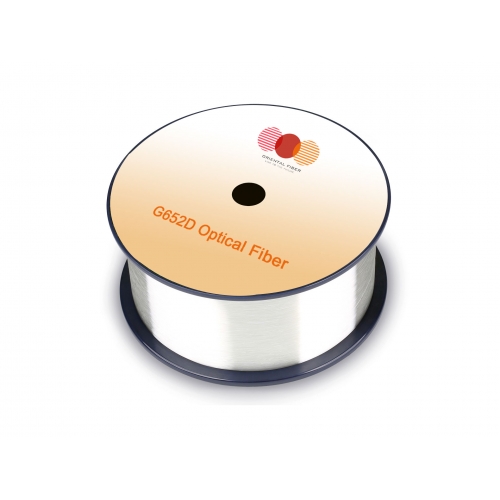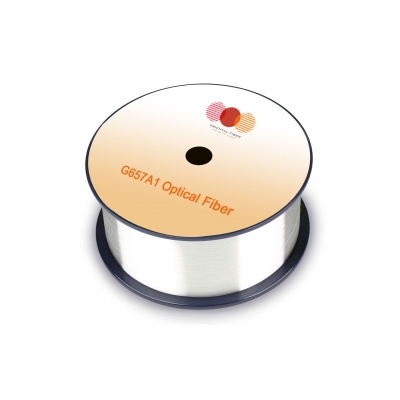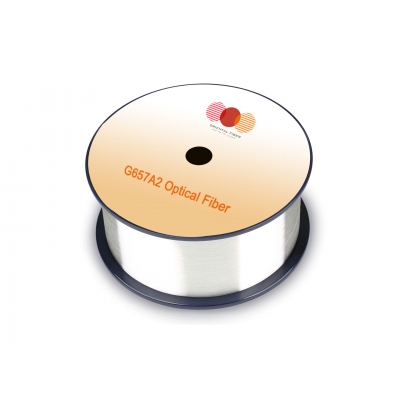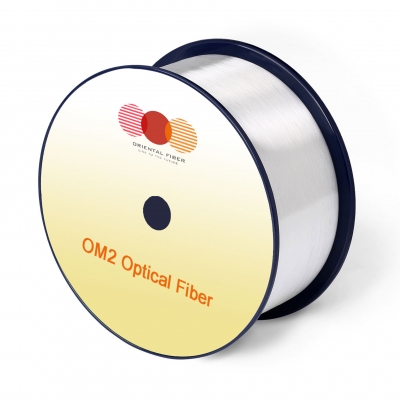Applications
Thanks to its broad usable optical spectrum and outstanding optical performance, fibre is the optimum choice that supports various applications such as Ethernet, Internet Protocol (IP), Asychronous Transfer Mode (ATM), Synchronous Optical Network (SONET) and Wavelength Division Multiplexing (WDM). Fibre provides more bandwidth for backbone, metropolitan area and access networks.
Standards
Fibre complies with or exceeds the ITU-T Recommendation G.652D and the IEC 60793-2-50 type B1.3 Optical Fibre Specification.
Tightens many parameters of fibre products so as to offer more conveniences to customers.
Characteristics
Designed for operation over the full optical spectrum from 1260-1625 nm, which provides 50% more usable wavelengths and hence the transmission capacity is increased
Outstanding optical performance supporting high-speed transmission technologies such as DWDM and CWDM
Being compatible with existing 1310 nm equipment
Good protection and excellent strip force stability
Accurate geometrical parameters that insure low splicing loss and high splicing efficiency
Specifications
|
Characteristics |
Conditions |
Specified values |
Units |
|
|
Optical Characteristics |
||||
|
Attenuation |
1310nm |
≤0.34 |
[dB/km] |
|
|
1383nm (after H2-aging) |
≤0.34 |
[dB/km] |
||
|
1550nm |
≤0.20 |
[dB/km] |
||
|
1625nm |
≤0.24 |
[dB/km] |
||
|
Attenuation vs. Wavelength Max. α difference |
1285-1330nm, in reference to 1310nm |
≤0.03 |
[dB/km] |
|
|
1525-1575nm, in reference to 1550nm |
≤0.02 |
[dB/km] |
||
|
Dispersion Coefficient |
1285-1340nm |
-3.5 to 3.5 |
[ps/(nm·km)] |
|
|
1550nm |
≤18 |
[ps/(nm·km)] |
||
|
1625nm |
≤22 |
[ps/(nm·km)] |
||
|
Zero Dispersion Wavelength(λ0) |
-- |
1300-1324 |
[nm] |
|
|
Zero Dispersion Slope(S0) |
-- |
≤0.092 |
[ps/(nm2·km)] |
|
|
Typical Value |
-- |
0.086 |
[ps/(nm2·km] |
|
|
PMD |
Maximum Individual Fibre |
-- |
≤0.1 |
[ps/√km] |
|
Link Design Value (M=20,Q=0.01%) |
-- |
≤0.06 |
[ps/√km] |
|
|
Typical Value |
-- |
0.04 |
[ps/√km] |
|
|
Cable Cutoff Wavelength (λCC) |
-- |
≤1260 |
[nm] |
|
|
Mode Field Diameter(MFD) |
1310nm |
8.7-9.5 |
[μm] |
|
|
1550nm |
9.8-10.8 |
[μm] |
||
|
Effective Group Index of Refraction(Neff ) |
1310nm |
1.466 |
-- |
|
|
1550nm |
1.467 |
-- |
||
|
Point Discontinuities |
1310nm |
≤0.05 |
[dB] |
|
|
1550nm |
≤0.05 |
[dB] |
||
|
Geometrical Characteristics |
||||
|
Cladding Diameter |
-- |
125.0±0.7 |
[μm] |
|
|
Cladding Non-Circularity |
-- |
≤1.0 |
[%] |
|
|
Coating Diameter |
-- |
235-250 |
[μm] |
|
|
Coating-Cladding Concentricity Error |
-- |
≤12.0 |
[μm] |
|
|
Coating Non-Circularity |
-- |
≤6.0 |
[%] |
|
|
Core-Cladding Concentricity Error |
-- |
≤0.6 |
[μm] |
|
|
Curl(radius) |
-- |
≥4 |
[m] |
|
|
Delivery Length |
-- |
Up to 50.4 |
[km/reel] |
|
|
Environmental Characteristics |
1310nm, 1550nm & 1625nm |
|||
|
Temperature Dependence Induced Attenuation |
-60℃ to +85℃ |
≤0.05 |
[dB/km] |
|
|
Temperature-Humidity Cycling Induced Attenuation |
-10°C to +85°C, 98% RH |
≤0.05 |
[dB/km] |
|
|
Water Immersion Dependence Induced Attenuation |
23°C,for 30 days |
≤0.05 |
[dB/km] |
|
|
Damp Heat Dependence Induced Attenuation |
85°C and 85% RH,for 30 days |
≤0.05 |
[dB/km] |
|
|
Dry Heat Aging |
85℃, for 30 days |
≤0.05 |
[dB/km] |
|
|
Mechanical Specifications |
||||
|
Proof Test |
-- |
≥9.0 |
[N] |
|
|
-- |
≥1.0 |
[%] |
||
|
-- |
≥100 |
[kpsi] |
||
|
Macro-bend Induced Attenuation |
100 Turns Around a Mandrel of 30 mm Radius |
1625nm |
≤0.05 |
[dB] |
|
100 Turns Around a Mandrel of 25 mm Radius |
1310nm and 1550nm |
≤0.05 |
[dB] |
|
|
1 Turn Around a Mandrel of 16 mm Radius |
1550nm |
≤0.05 |
[dB] |
|
|
Coating Strip Force |
typical average force |
1.5 |
[N] |
|
|
peak force |
1.3-8.9 |
[N] |
||
|
Dynamic Fatigue Parameter(nd) |
-- |
≥20 |
-- |
|












.jpg)